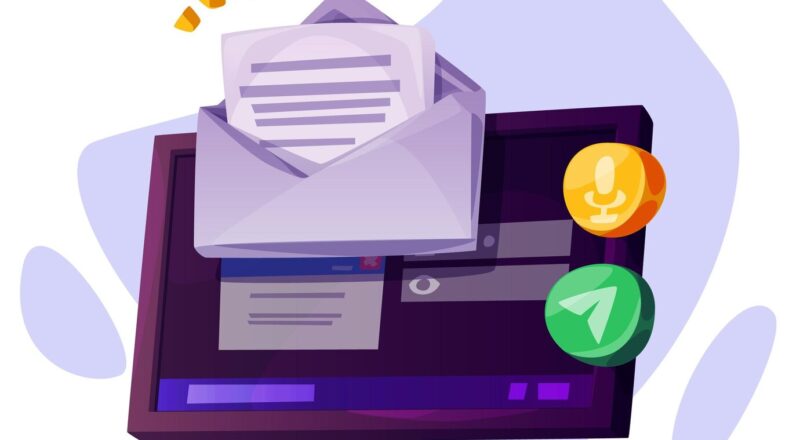In the dynamic realm of sales, where every connection counts, the ability to craft compelling cold emails is a game-changer. Cold emailing might seem like a daunting task, but when executed with finesse, it can significantly elevate your sales endeavours. In this article, we delve into the fundamental skills that every salesperson should harness to make their cold email campaigns impactful, fostering meaningful relationships and boosting overall sales success.
1. Research and Targeting
Before hitting that “send” button, dive into thorough research on your prospects. Understand their needs, pain points, and interests. Personalisation is the key to capturing attention. Craft your email to address specific challenges, showcasing that you’ve invested time in understanding their business. Your genuine interest will set the tone for a more receptive audience.
2. Compelling Subject Lines
Craft subject lines that intrigue, offer value, or directly address a pain point. Steer clear of generic or spammy subject lines that risk being ignored. Your subject line is the first impression, so make it count.
3. Clear and Concise Messaging
In a world where time is of the essence, keep your message succinct and impactful. Clearly communicate the value you offer, backed by evidence such as case studies or statistics. Utilise short paragraphs and bullet points to enhance readability. A direct and focused approach ensures your message is understood amidst the busy schedules of professionals.
4. Value Proposition
Convey the value you bring to the table. Clearly explain how your offering addresses specific problems or contributes to their goals. Back your claims with evidence to build credibility. A compelling value proposition lays the groundwork for prospects to see the immediate benefits of engaging with you.
5. Call to Action (CTA)
Include a compelling Call to Action that guides recipients on the next steps. Whether it’s scheduling a call, requesting a meeting, or downloading a resource, make it easy for them to take action. Be specific about what you want them to do, fostering a clear path for engagement.
6. Personalisation
Personalisation extends beyond addressing recipients by their first names. Infuse specific details from your research, showcasing a genuine interest in their unique needs. Personalised emails resonate more with recipients, increasing the likelihood of a positive response. Forge a connection by demonstrating your investment in understanding their individual situation.
7. Follow-Up Strategy
Lack of immediate responses shouldn’t be discouraging. A well thought-out follow-up sequence is crucial in cold emailing. Send follow-up emails at strategic intervals, adding value to each interaction. Respect the recipient’s time and space, building a presence in their inbox. Patience and persistence are key to cultivating relationships that yield positive responses over time.
8. A/B Testing
A/B testing is a potent tool for refining your cold email strategy. Experiment with different elements like subject lines, messaging, CTAs, and templates. Use data-driven insights to continually optimise your campaigns. Over time, A/B testing unveils the most effective combinations that maximise open rates, engagement, and conversions.
9. Email Tracking and Analytics
Leverage email tracking tools to monitor recipient engagement. Track open rates, click-through rates, and responses to gauge the effectiveness of your campaigns. Utilise these insights to make data-driven improvements and fine-tune your approach.
10. Compliance with Regulations
Ensure your cold email campaigns adhere to relevant regulations such as the CAN-SPAM Act or GDPR. Include a clear opt-out option, respecting recipients’ preferences and privacy.
11. Storytelling
Craft compelling stories within your emails to humanise your message. Share success stories or customer testimonials that illustrate the positive impact of your product or service.
12. Building Trust
Trust forms the foundation of successful sales relationships. Avoid aggressive or pushy language, focusing instead on building trust through valuable information and solutions that address the recipient’s needs.
13. Content Creation Skills
Create engaging content like blog posts, white papers, or videos that demonstrate your expertise. Share valuable content with prospects to showcase your knowledge and provide added value.
14. Time Management
Efficiently manage your time when crafting and sending cold emails. Prioritise high-value prospects and allocate your time wisely to maximise productivity.
15. Data Analysis
Analyse data from your email campaigns to identify patterns and trends. Use data-driven insights to refine your email strategies and target the most responsive leads.
16. Negotiation Skills
Develop negotiation skills to navigate the sales process effectively. Be prepared to negotiate terms, pricing, and agreements with potential clients.
17. Emotional Intelligence
Develop emotional intelligence to understand your prospect’s feelings and motivations. Tailor your emails to resonate with their emotions, addressing pain points or highlighting aspirations.
18. Professional Email Signature
Craft a professional email signature including your name, title, company, contact information, and a link to your LinkedIn profile. A professional signature adds legitimacy to your message.
19. Continuous Learning
In the ever-evolving landscape of sales and email marketing, continuous learning is vital. Stay updated on the latest trends, tools, and best practices. Attend webinars, read industry blogs, and seek opportunities for professional development.
Mastering the art of cold emailing is a potent skill for any salesperson. By integrating these essential skills, you not only increase your chances of success but also build meaningful connections with potential clients. Cold emailing is not just about making a sale; it’s a journey of building relationships and providing value to your prospects.

